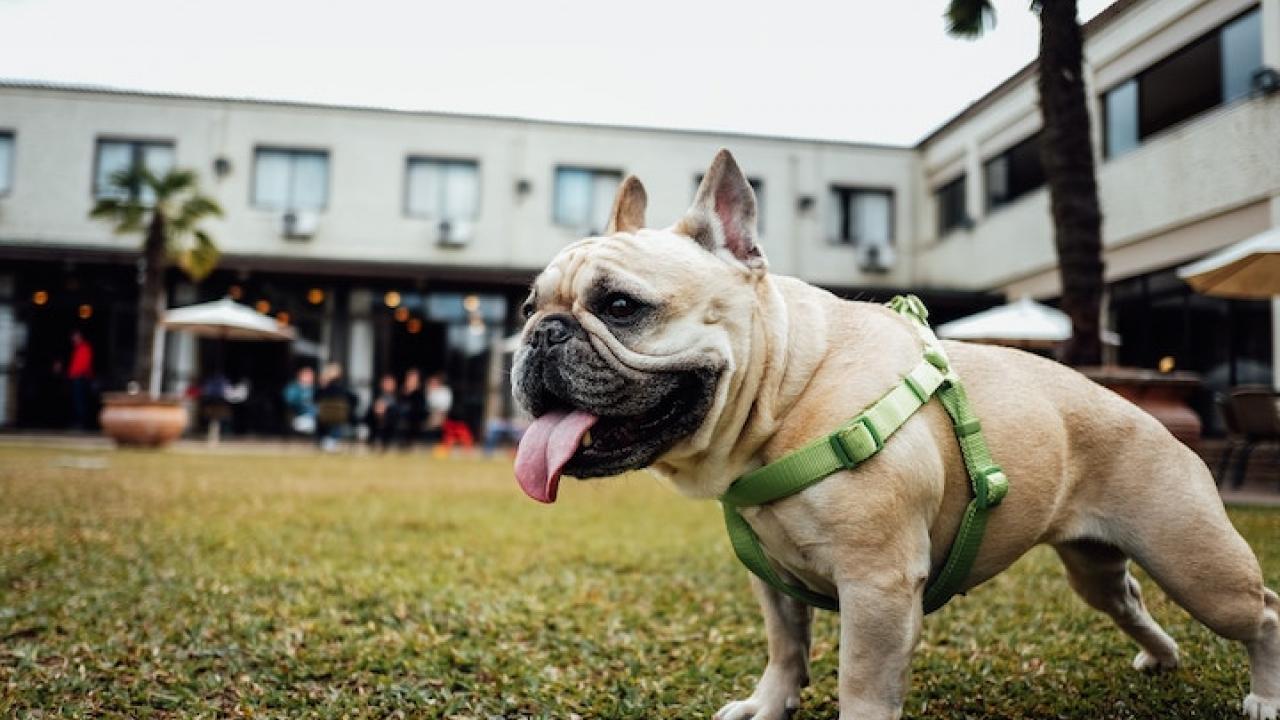
Urine Marking in Dogs
Urine Marking in Dogs
How we can help
Call 530-752-1393 to schedule an appointment with the Behavior Service.
A dog urinating on objects, usually vertical, is a normal, instinctive social behavior. Dogs mark their territory by urinating on certain objects within their territory. The dog returns to these spots on occasion to renew this olfactory mark. Usually the amount of urine produced is a smaller amount than when the dog relieves himself. Marking often occurs in areas where other dogs have urine marked or left there odor. Although more commonly seen in intact males, neutered males and females also mark.
What is inappropriate marking?
- Inappropriate marking is when an otherwise healthy, housetrained dog marks objects in an area that is not acceptable to the owner, such as inside a home.
Why is my dog inappropriately marking?
- Causes of inappropriate urine marking can be hormonal or social. Social factors include situations that cause anxiety or territorial stimuli, such as other animals entering their “territory,” or the introduction of something new, such as grocery bags, people, or furniture. Dogs with other anxieties, such as separation anxiety or noise phobia, can also mark.
What can I do to prevent inappropriate marking?
- If your dog is intact, neuter your dog. One study found that 40% of male dogs castrated for marking drastically decreased their marking, regardless of age of castration.
- Neuter all animals in the household. Hormonal changes in other animals, like female dogs in heat, may trigger marking.
- It is important to rule out underlying medical problems that may cause inappropriate urine marking. The stress of medical problems can be a contributing factor to marking.
- Clean up residual odors of the urine with enzymatic cleaners.
- Block or eliminate provoking stimuli by covering windows where your dog can see other dogs walking by or blocking access to a room where your dog may hear other dogs walking by.
- Have a conversation with your veterinarian about separation anxiety or other anxieties to determine if this is the cause of inappropriate urine marking. Treat these underlying causes.
- Do not place new objects on the floor until your dog has gotten used to having them in the house.
- During training, when your dog cannot be supervised, he should be confined to a smaller area so that he does not practice inappropriate urine marking when the owner is not home. He may subsequently learn that it is acceptable to mark when the owner is away.
- Establish conspicuous objects outside the house where marking is acceptable, and reward for acceptable marking.
- Change the emotional state of your dog around target areas to pleasurable areas of play or eating.
- In dogs with extreme anxiety, anti-anxiety medications may be beneficial.
- Establish leadership from the owner and routine in the dog’s life by implementing non-confrontational leadership exercises.
Things not to do
- When you witness your dog marking, do not yell at him or use other types of direct punishment. This may lead to your dog marking when you are not present, or sneaking off to mark. Do not punish your dog after the fact by rubbing their nose in it, etc. as your dog will not associate it with the marking that happened awhile ago.
Summary
Though your dog may drive you crazy marking around the house, it is not a hopeless situation!
There are many steps you can take to eliminate or minimize the behavior, beginning with neutering. Start by analyzing why your dog is marking to determine if there is an underlying problem. Animals also depend on their owners to teach them appropriate behaviors, so you must be consistent with your rules. By starting with a few of these simple changes, you may be able to correct your dog's inappropriate marking. If you should need further assistance, be sure to contact your veterinarian, who may send you to a board certified veterinary behaviorist.
*This article may not be reproduced without the written consent of the UC Davis School of Veterinary Medicine.
